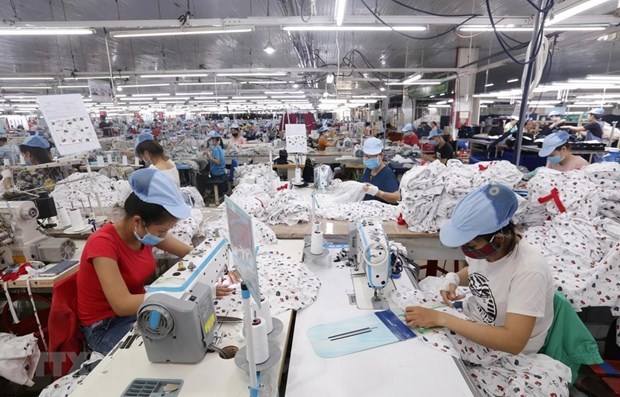EVFTA submitted to NA for ratification
Vice President Dang Thi Ngoc Thinh presented the State President’s proposal to the National Assembly for ratifying the EU-Viet Nam Free Trade Agreement (EVFTA) at the opening sitting of the 14th National Assembly’s ninth session on May 20.
 |
| Illustrative image (Photo: VNA) |
Signed in Hanoi on June 30, 2019, the EVFTA consists of 17 chapters, eight annexes, two protocols, two memoranda of understanding, and four joint statements. With its level of commitment, the deal is considered a comprehensive and high-quality agreement that guarantees the balance of interests between Viet Nam and the EU and matches WTO regulations.
Vice President Thinh said that in terms of politics, national security, and diplomatic strategy, the deal reflects the strong determination of both sides to strengthen bilateral ties, thereby helping to develop relations in a more intensive and substantive manner.
Together with the Comprehensive and Progressive Agreement for Trans-Pacific Partnership (CPTPP), the ratification and implementation of the EVFTA would affirm Viet Nam’s commitments to the international free trade system, help promote negotiations of FTAs with other important partners, and mark an important stage in the country’s comprehensive and intensive international integration, she said.
As Viet Nam is holding the ASEAN Chairmanship in 2020, the EVFTA will help enhance its role and stature in EU-ASEAN relations and be an example of an FTA between the two blocs in the future, according to the Vice President.
She also cited a Government report as saying that after the deal takes effect, bilateral trade and the EU’s investment in Viet Nam will both increase, actively contributing to economic growth, job creation, and State budget revenue.
However, she noted, the pact may also generate certain challenges in market competition, the reform of the legal system to comply with the deal’s strict requirements, and the pressure of social supervision over the deal’s implementation.
Regarding Brexit and the UK’s relationship with the EVFTA, Thinh said that under the Brexit agreement, the UK will have a transition period before officially leaving the EU. Therefore, if the EVFTA becomes effective during this transition period, the UK will still benefit from Viet Nam’s commitments with the EU under the pact and vice-versa.
The UK also has the right to negotiate, sign, and ratify new bilateral FTAs during the transition period, but such deals must not come into force or be implemented during that time, unless the EU agrees.
It has been promoting talks on a bilateral agreement with Viet Nam on the basis of the EVFTA, so any future deal could be enforced after the transition period, Thinh noted.
Delivering a verification report on the matter, Chairman of the NA’s Committee for External Relations Nguyen Van Giau said ratifying the pact would send out an important message about Viet Nam’s resolve to foster international economic connectivity and support the rules-based multilateral trade system amid emerging populism and trade protectionism. It will also help diversify the country’s markets and ensure economic security.
The signing and ratifying of the EVFTA at this point in time is appropriate, he said, as it will continue to create momentum for international economic integration and domestic economic recovery after the COVID-19.
Given this, the committee proposed the NA ratify the EVFTA at this ninth session and allow the implementation of the deal with the UK until the transition period ends on December 31, 2020. The FTA enforcement in relation to the UK could be extended for an additional 24 months under the Brexit agreement.
The committee also proposed the legislature assign the Government to step up negotiations for and the signing of a bilateral FTA with the UK on the basis of the EVFTA, Giau said.
Source: VNA